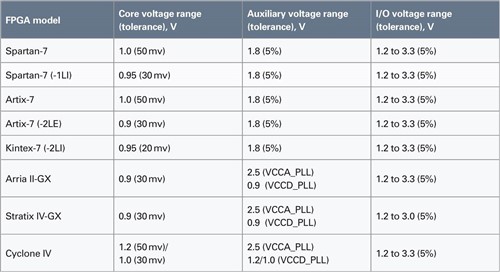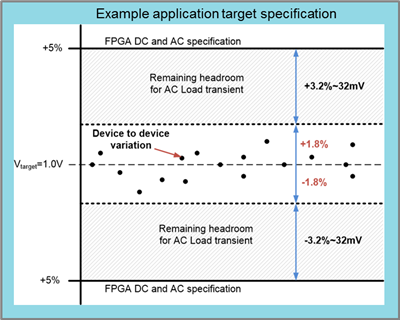SSZT729 may 2018 TPS62135 , TPS62136 , TPS62147 , TPS62148 , TPS62821 , TPS62822 , TPS62823 , TPS62825 , TPS62826 , TPS62827
The Industrial Internet of Things (IIoT) and Industry 4.0 are creating a stronger push toward smaller computing systems with increased performance. This is being driven by semiconductor process geometries declining to 10nm or below, making power supply for applications such as industrial PCs more challenging than ever before. This is shown in Figure 1's examples of supply requirements for selected field-programmable gate arrays (FPGAs) that have incredibly low core voltages and tight tolerances. With these additional challenges, it becomes increasingly important for engineers like you to pay attention to the details: not all 1% accuracy specifications are equal.
 Figure 1 Supply Voltage Requirements for Selected FPGAs
Figure 1 Supply Voltage Requirements for Selected FPGAsAdditional Considerations That Factor into Output Accuracy.
Figure 2 shows an example of the tolerance stack-up with a 1% reference voltage and 1% resistor accuracy, summing up to ±1.8% DC variations.
 Figure 2 Target Specification with 5% Variation at a 1.0V Core Supply
Figure 2 Target Specification with 5% Variation at a 1.0V Core SupplyDon't Forget about Temperature Variation!
Conclusion
Additional Resources
- Watch the video, “How to meet an FPGA’s DC voltage accuracy and AC load transient specification?”
- Check out the webinar, “How to Reduce the Total Size of FPGA Solutions.”
- Download the Small Efficient Flexible Power Supply Reference Design for NXP iMX7 Series Application Processors.
- Read the blog post, “Oh yes! My FPGA application is safe.”